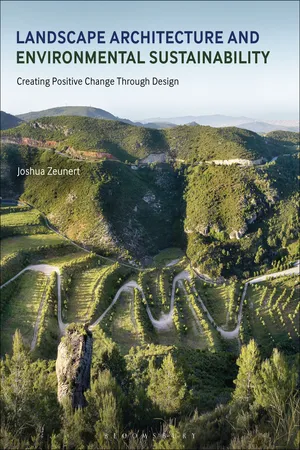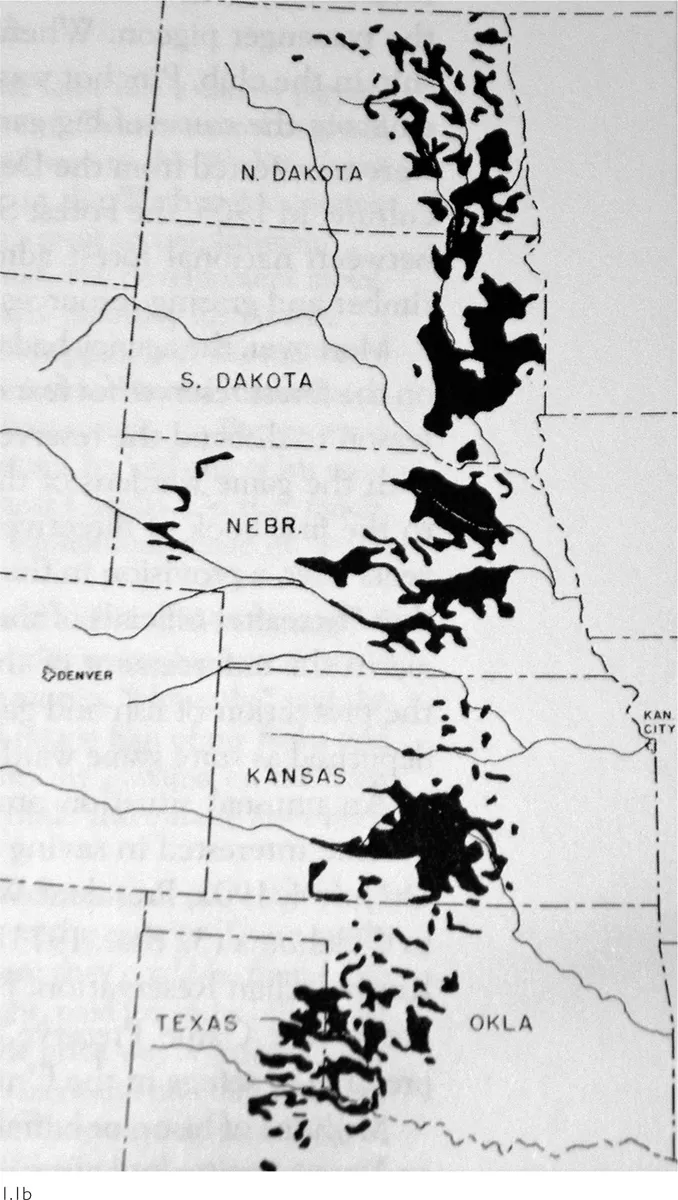
Landscape Architecture and Environmental Sustainability
Creating Positive Change Through Design
- 320 pages
- English
- ePUB (mobile friendly)
- Available on iOS & Android
Landscape Architecture and Environmental Sustainability
Creating Positive Change Through Design
About This Book
Winner of the Australian Institute of Landscape Architects (AILA) National Excellence Award (Research and Communication) 2017
Winner of the AILA VIC Excellence Award (Research and Communication) 2017
Highly Commended (Communication and Presentation) Landscape Institute Awards 2018 Landscape architecture has a pivotal role in ensuring environmental sustainability through design interventions. This book takes a broad look at strategies and completed projects to provide the reader with a strong understanding of the sustainability challenges being faced by designers today, and potential routes to addressing them. The book covers essential concepts of landscape architecture and environmental sustainability, including: - Ecology, multifunctional landscapes and sensitive intervention
- Remediation, cleansing and environmental infrastructure
- Social sustainability, design activism and healthy landscapes
- Food systems, productive landscapes and transportation
- Performance ratings, materials and life cycles Through case studies from around the world and interviews with leading landscape architects and practitioners, this book invites discussion about possible future scenarios, relevant theories and project responses in landscape environmental design. With hundreds of color images throughout the book, and additional study material in the companion website, Joshua Zeunert provides an overview of the multidimensional qualities of landscape sustainability.
Frequently asked questions
Information
AN INTRODUCTION

Buried machinery, Dallas, South Dakota, 1936

1.1b
North Great Plains Shelterbelt (Toronto, Canada to Abilene, Texas), 1934
Early 20th-century agricultural practices like native vegetation clearance led to crippling frequent dust storms in the USA’s Great Plains. This harsh, semi-arid environment became known as the ‘Dust Bowl’. President Franklin Roosevelt and the US Forest Service coordinated a 100 mile (160km) wide ‘shelterbelt zone’ from Toronto in Canada to the Brazos River, Texas. Despite the substantial challenges and complexities of this continental-scale project (such as high capital cost and multiple jurisdictions), the Civilian Conservation Corps, aided by paid farmers, began planting 220 million trees in 1934. These shelterbelts would reduce the harmful effects of prevailing dry winds, protect fields and livestock; reduce evaporation through holding water and snow in the soil; reduce soil erosion by holding soil in place; and ultimately, eliminate large dust storms. Even today, the project perhaps represents the largest and most focused effort of the US government to address an environmental problem. Image 1.1b shows part of the planned shelterbelt zone.

Geologic Time
Since Paul Crutzen and Eugene Stoermer coined the term ‘Anthropocene’ in 2000 to reflect the evidence of substantial impact of humanity upon the Earth’s systems, ‘official’ recognition of this new era to replace the existing ‘Holocene’ on the geological time scale (shown here) has gained significant momentum.
Hunting and Gathering (200000 BCE to present)
Homo erectus appeared around 2 million years ago and expanded their populations through Europe and Asia 1 million years ago.
Homo sapiens extended its population to Americas 1st Agricultural (Neolithic) Revolution c. 10000 BCE Beginnings of ‘civilization’
Civilization (10000 BCE to present)

Easter Island
Easter Island was once home to a range of plant and animal species including 21 tree species. By European arrival in 1722, the island’s Polynesian population had dropped from its peak of 15,000 to 2,000–3,000 due to environmental mismanagement and mass tree clearing. Jared Diamond terms this process “ecocide” and the “clearest example of a society that destroyed itself by overexploiting its own resources.”
Table of contents
- Cover
- Title Page
- Contents
- Preface
- Chapter 1 An Introduction
- Chapter 2 Landscape and Ecology
- Chapter 3 Landscape as Cleanser
- Chapter 4 Environmental Infrastructure
- Chapter 5 Landscape and Food
- Chapter 6 Landscape Activism, Art and Beauties
- Chapter 7 Social Sustainability: Influence Beyond Site
- Chapter 8 Less is More: A Lighter Touch
- Chapter 9 Landscape and Performance
- Chapter 10 Scenarios, Challenges and Reframing Land(scape)
- Glossary
- Resources
- Acknowledgments
- Image Credits
- eCopyright